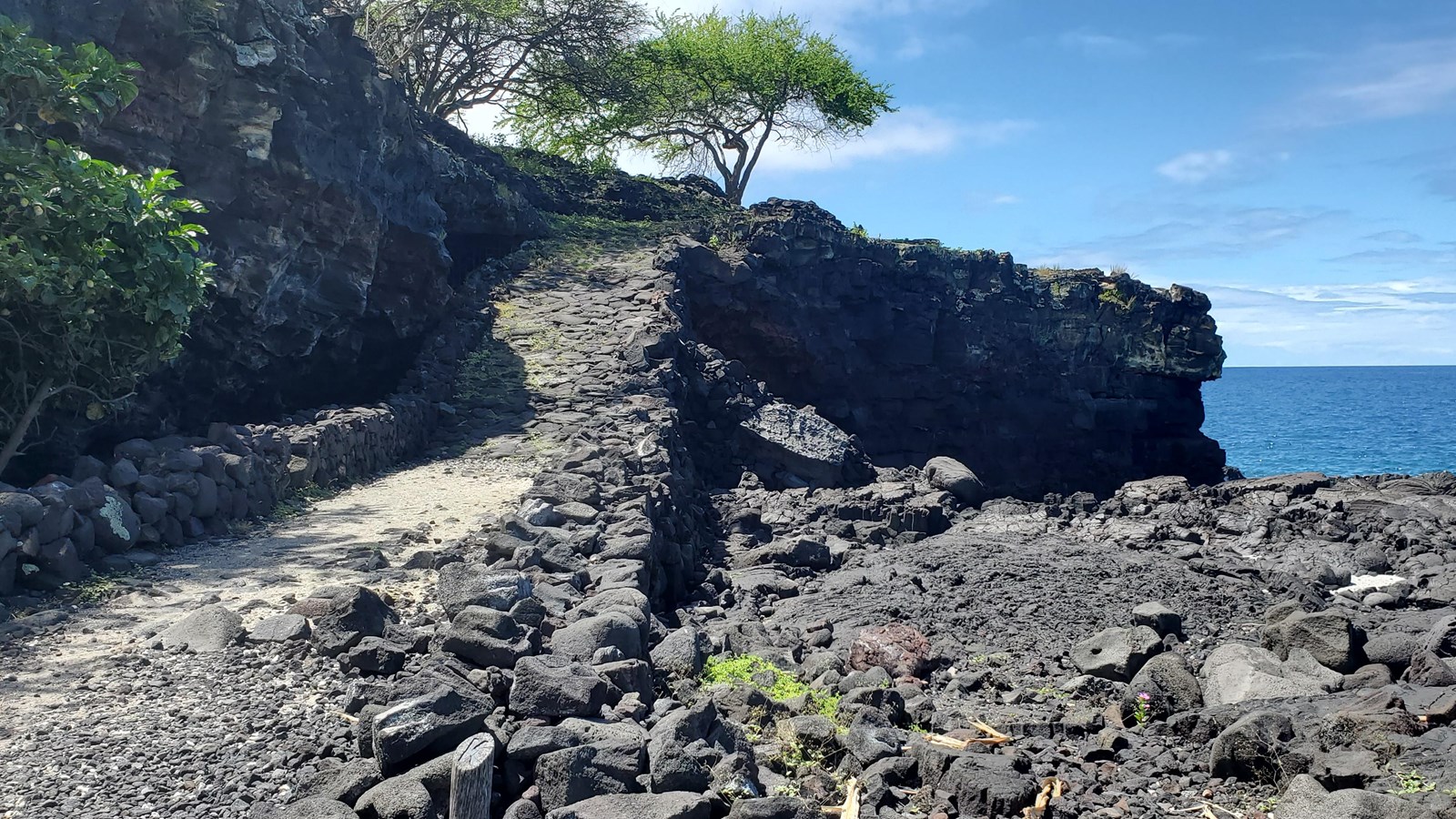Last updated: October 18, 2021
Place
H - Alahaka Ramp

NPS / Chisholm
Historical/Interpretive Information/Exhibits, Scenic View/Photo Spot
Another historic improvement to the 1871 trail was the construction of the Alahaka Ramp, the massive stone ramp that connects the trail to Kiʻilae Village. Historical accounts collected over the years indicate that access to Kiʻilae, prior to the construction of the ramp, was via a ladder or rope. So, it was pretty dangerous!
There is no clear indication as to when the original ramp was built, but it most likely occurred sometime in the mid-1800s when a series of large-scale government programs were initiated to improve to public resources, such as roadways. However, the first version of the ramp would definitely not have held up to our modern-day safety standards. Local paniolo (Hawaiian cowboys) described the original ramp as the “one-foot-out trail,” as they would ride up and down the ramp with one foot out of the stirrup just in case they had to make a hasty escape due to the poor condition of the ramp.
Due to this dangerous part of the commute to Kiʻilae village, improvements were made in 1868 to widen and stabilize the ramp. In a letter to the Hawaiian Kingdom Minister of the Interior dated Feb. 4, 1868 George Hardy, the road supervisor at the time, said:
"In South Kona, I have repaired [a very] bad place known by the name of Alahaka in the village of Ki'ilae, a place of great danger where several horses had been kill'd: and where people were [sic] in danger of going up and down. I have made it wide and a substantial road."
Unfortunately later that year, in 1868 there was a particularly destructive eruption event from Mauna Loa that caused multiple massive earthquakes (7-7.9) which in turn caused tsunamis and landslides across the island. During this event, the ramp may have been damaged and by the late 1890’s the Alahaka Ramp had fallen into a state of disrepair. In a letter dated December 31, 1897 road supervisor T. H. Wright wrote:
"Napo’opo’o to Ho’okena beach road in a fearful condition, it needs repair of the worst kind. The Walahaka [Alahaka] pali (cliff) is very dangerous. This road is used every day for the convenience of the public, going and back to these places."
Over the years, repairs were made, but in 1951, a large earthquake caused an upper section of the ramp to slough off and that continued to deteriorate. So, when the National Park Service came in, about twelve years later, the ramp was once again in a state of disrepair. This prompted a major stabilization project to restore and strengthen the Alahaka Ramp. Stabilization efforts consisted of removing the earthquake-damaged sections, clearing away boulders, and rebuilding the entire makai (ocean-facing) side.
Given its proximity to the ocean and the cliffside, even today the Alahaka Ramp requires periodic maintenance and stabilization as a result of high surf, storm, and earthquakes. During the most recent effort, which occurred in 2010, NPS crews repaired a damaged portion of the outer face and stabilized the ramp buttress and trail trea This, of course, was no easy feat, as the work was located right along the steep ocean cliffside.
As the years go on, and climate change causes increased storm intensity and sea level rise, these coastal trails will require a sustained joint effort to continue to preserve these pieces of history and the stories they contain. What is something or someplace that means a lot to you that is threatened by climate change? What efforts do you hope are taken to preserve it?
